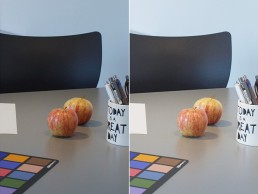
New research project to combine dynamic daylight and artificial light
(Denmark) – Research to investigate quality of light for work environments.
A new approach to lighting design and technology is the focus of a new study currently being conducted at Aalborg University in Copenhagen, supported and accompanied by several lighting companies.
The study, entitled Double Dynamic Lighting (DDL), will explore the combination of dynamic daylight and artificial light in a spatial context, potentially opening up a new dimension for architects and lighting experts in supporting individual needs and different working requirements.
In a unique collaborative project, partners from the fields of lighting technology and solutions, including Fagerhult, Zumtobel, iGuzzini and Tridonic, have been working with Aalborg University for the past three years. “Rethinking Light” was the idea that inspired these companies to join forces in supporting this new fundamental research into dynamic lighting.
The DDL research project aims to set the guidelines for comfortable illumination in workspaces by combining direct and diffuse dynamic daylight and artificial light. The new approach of DDL will have a positive impact on perceived atmosphere, visual comfort, and work engagement, with the results hoping to demonstrate the potential to use new sensor and lighting technologies to meet human needs.
The project team has produced proposals for lighting scenes based on the natural course of daylight, as well as current sky conditions. By exploring how a responsive lighting technology that reacts to and complements daylight inflow can reconnect man and nature, the findings, researchers hope, will help to form a more holistic design approach in the future.
The project is examining the spatial conditions in a dynamic lighting environment, and their influence on the wellbeing of users. Practical design guidelines are being developed, tested and implemented in a series of investigations. This work is being conducted in existing working environments with dynamic light, in lighting laboratories at Aalborg University and in interactive, three-dimensional computer models.
The results of the field study have already demonstrated that it is possible to define dynamic light settings in response to the dynamics of daylight through a combination of direct and diffuse lighting. DDL was validated to have a positive impact on perceived atmosphere, visual comfort and work engagement when compared to static lighting. In general, it was confirmed that the combination of directional task lighting and diffuse ambient lighting in response to sky types and measured daylight levels in the workspace was preferred to standard static diffuse lighting.
An analysis of responses from interviewees has also revealed a large difference in perceived visual comfort between dynamic and static lighting periods, indicating that working with light zones and with direct and diffuse lighting components and uneven light distribution enable a high level of visual comfort to be achieved. The industry partners added their practical application knowledge, working hand in hand with the university.
Prof. Ellen Katherine Hansen, project lead and Head of Lighting Design in the Department of Architecture, Design & Media Technology, said: “The aim of the study is to apply an innovative mix of methods to create a holistic approach to lighting planning, which can then function as a seal of quality in the lighting industry. A combination of biological, aesthetic and functional aspects will form the basis for the design process.”
Karin Zumtobel-Chammah, Chairwoman Supervisory Board at Zumtobel, added: “A fundamental element of our DNA is our desire to improve health and wellbeing by providing the best possible light for both people and the environment. Our research and development projects constantly aim to achieve these improvements. We identified a great overlap between our research topics and the DDL project, so we were convinced that the findings of this research on combining daylight and dynamic lighting technology would contribute to better health and wellbeing.”
Henrik Clausen, Director of Fagerhult Lighting Academy, said: “For us it’s also about knowledge. It is a challenge to enhance our general lighting knowledge. We need to do that in order to take advantage of all the possibilities for health and wellbeing that light can give us.”
Peter Roos, Product & Project Solutions Director at iGuzzini, concluded: “The idea of the DDL research is to find new lighting design guidelines for workspace lighting which will improve the wellbeing of end users. So in the first instance, it will be ‘all of us’ living and working in spaces illuminated by applied DDL design guidelines who will benefit from the DDL research findings.
“We at iGuzzini believe that the lighting design community, together with architects and lighting professionals, will embrace the idea of Double Dynamic Lighting to create beautiful spaces we’ll love to live in.”
www.light.aau.dk/DDL
www.zumtobel.com
www.fagerhult.com
www.iguzzini.com
www.tridonic.com



